Real lessons from 5 years of NYC storage unit chaos
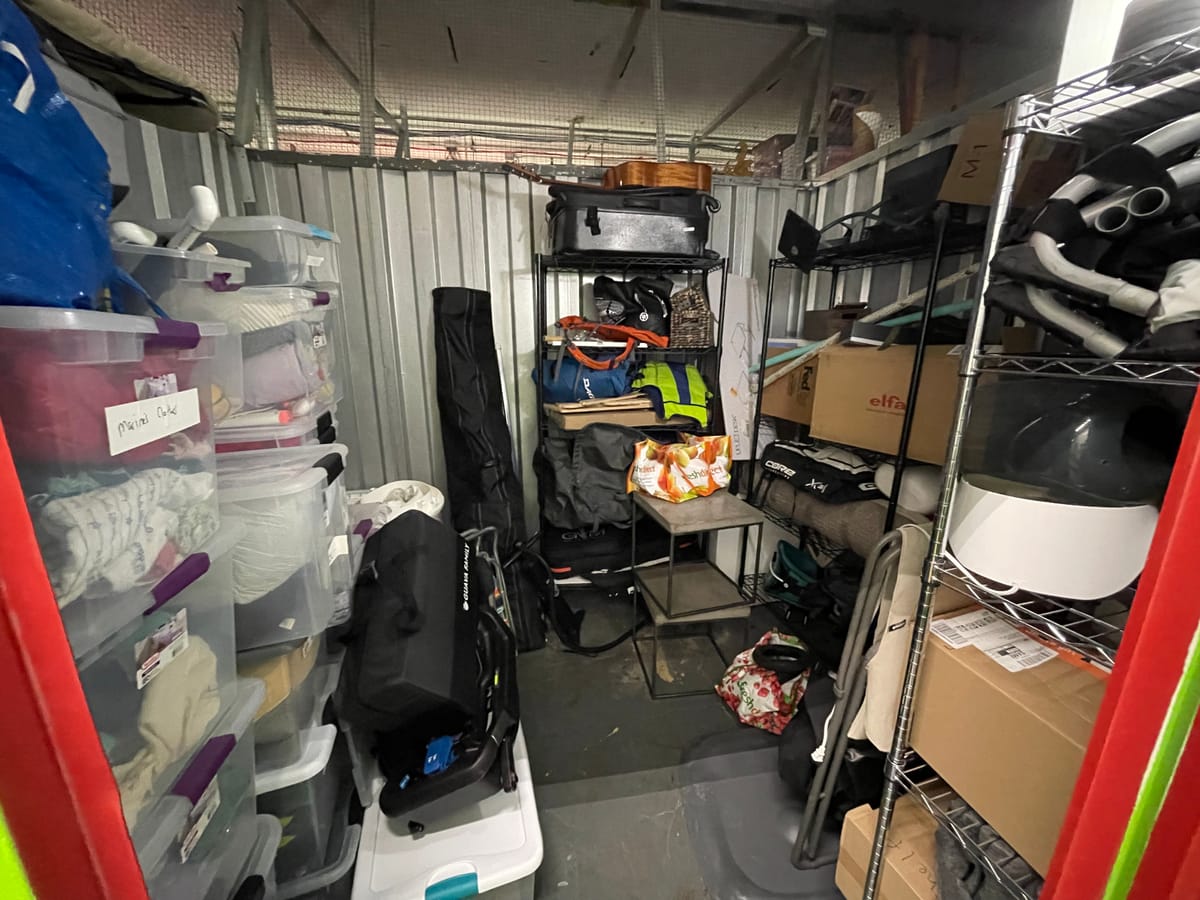
NYC apartments are always an exercise in creative use of space, but add kids to the equation and things get a lot more challenging. One creative solution for space is having a storage unit, and in particular a storage unit that’s very close to your apartment so you can grab things when you want.
Over the last 5 years of having two different storage units, I realized they can get very impractical if you don't have a system for organizing things. Storage units can become big black holes that everything goes into… but it's impossible to get things back out of. As a result, I’ve identified a bunch of gear, and software tools that help me keep everything organized.
The shopping list
If you would rather not read through the full post, and just want to buy the stuff that works, here’s a cheat sheet:
- Local Locker - storage units in your neighborhood
- 36 In Wire Frame Shelves
– Smaller Cheaper Shelves– Caster Wheels - 64 qt Sterilite Bin
- Colored Gaff Tape
- Rock’n’roller Multi Cart
- Sharpie Marker
- TickTick - app for tracking items
- Gladiator Cabinet
- Magnet hooks - great for metal walls of storage units
Bins
Bins depends on your use case and location. My personal preference is to have clear bins so I can see inside and easily locate items I’m looking for. I’m primarily keeping them in my storage unit, so seeing the clutter through the clear bins isn’t a concern.
I tried these 70qt ones from Sterilite, and I found that the lids crack way too easily. Just knocking the box on the staircase railing would put several cracks in a lid, and you can’t buy the lids separately to replace the broken ones.
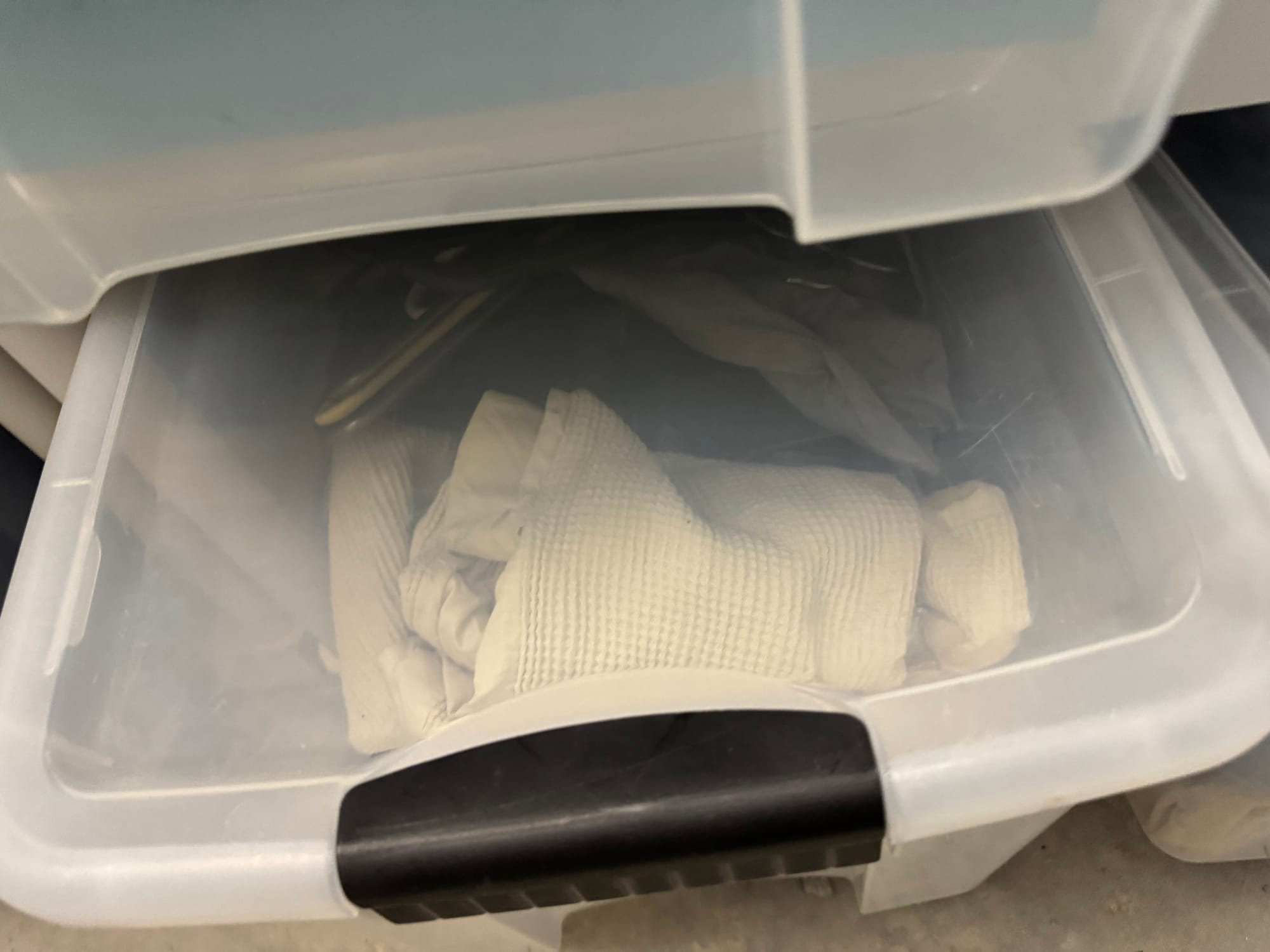
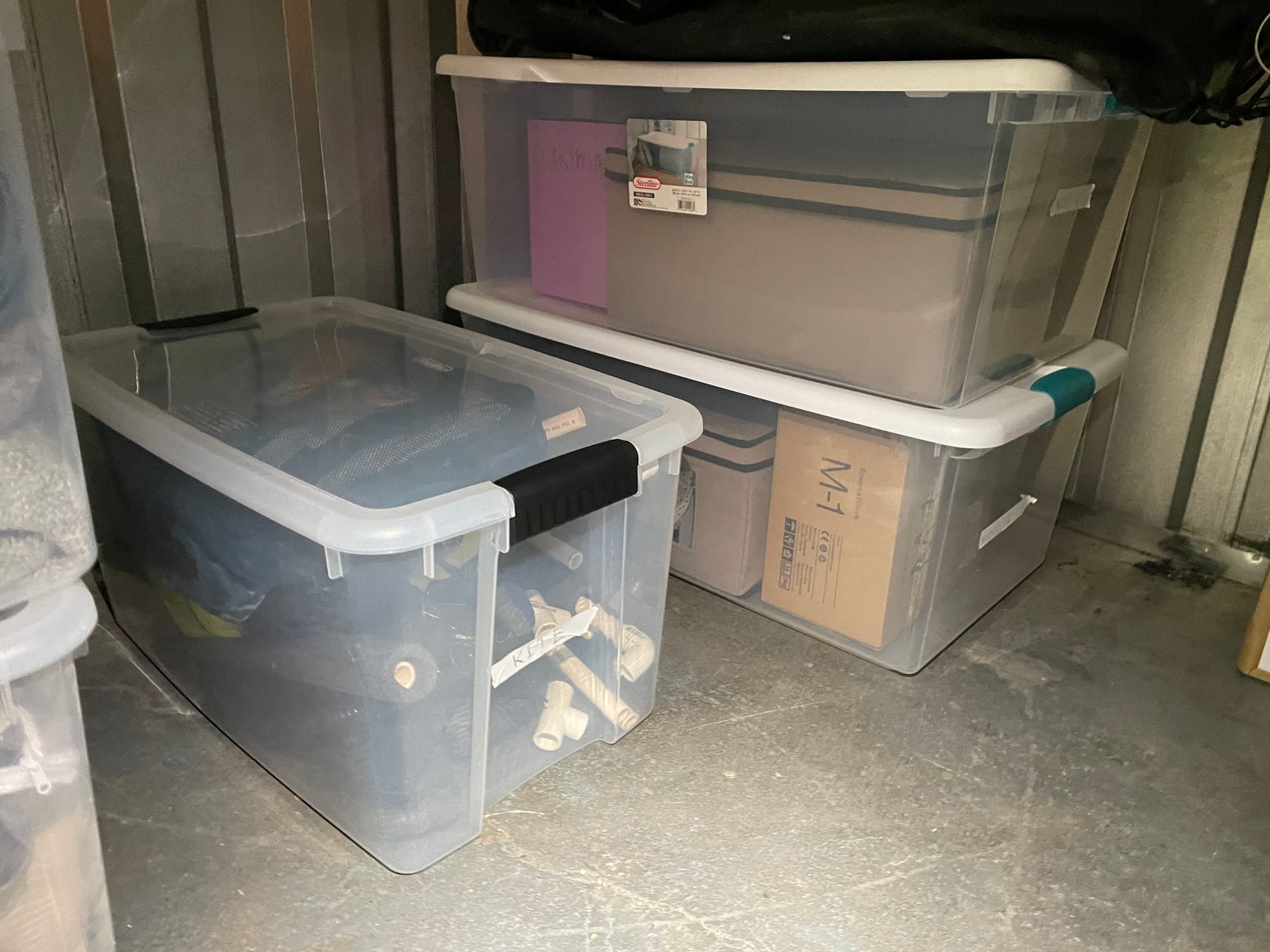
I then moved to these 64qt Steriliteones with the blue or white lids. The lids are a different type of plastic and those they have been much more resilient to cracking. I’ve stacked them up to 5 high and had no issues with them.
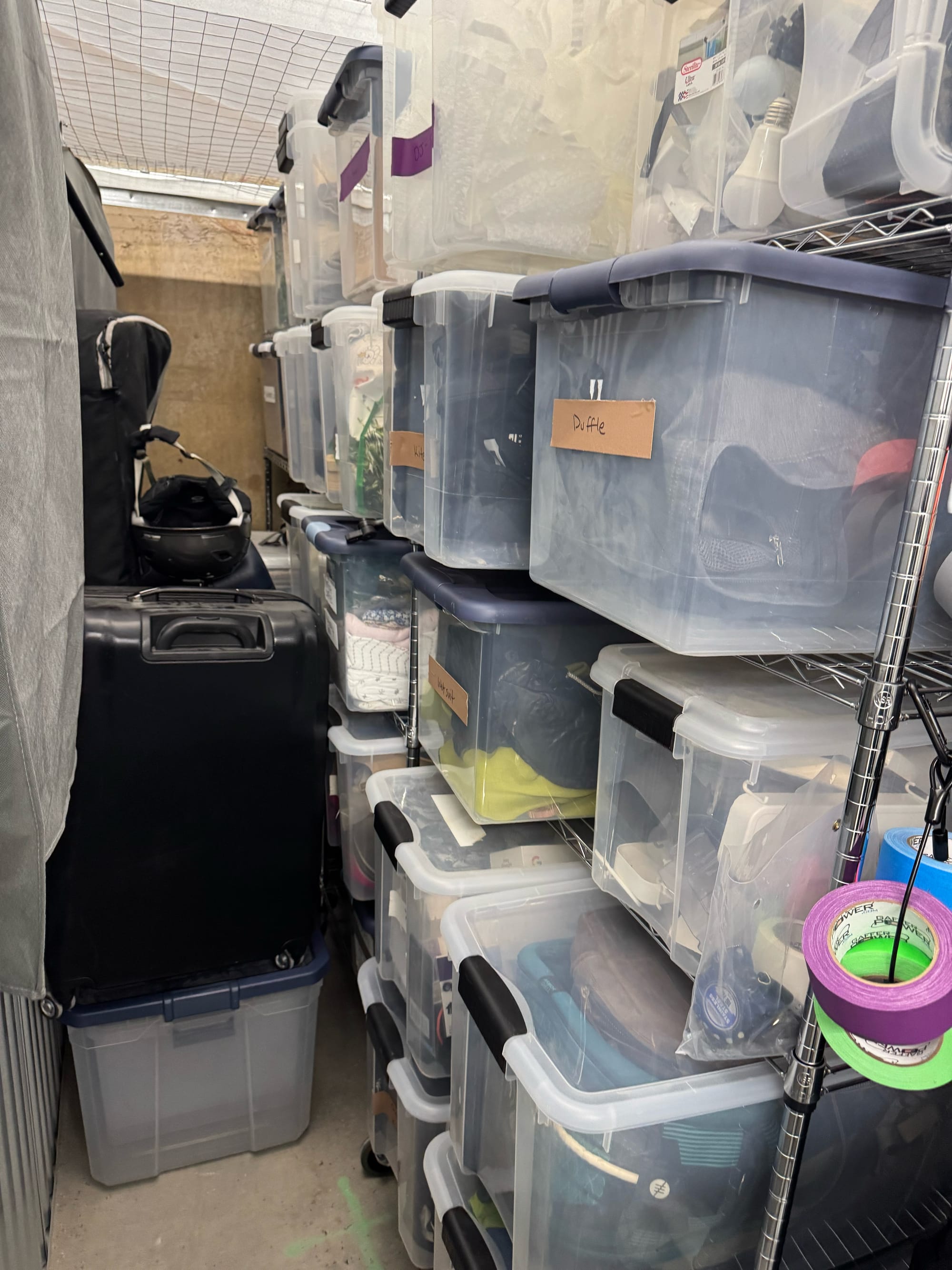
I tested the more popular 27 gallon bins that people get at Home Depot and Costco for cheap, and I found that they are too big / heavy for the distances that I need to cover. They are too easy to fill with too much weight, and it makes it quite challenging to get down my stairs to load into my car.
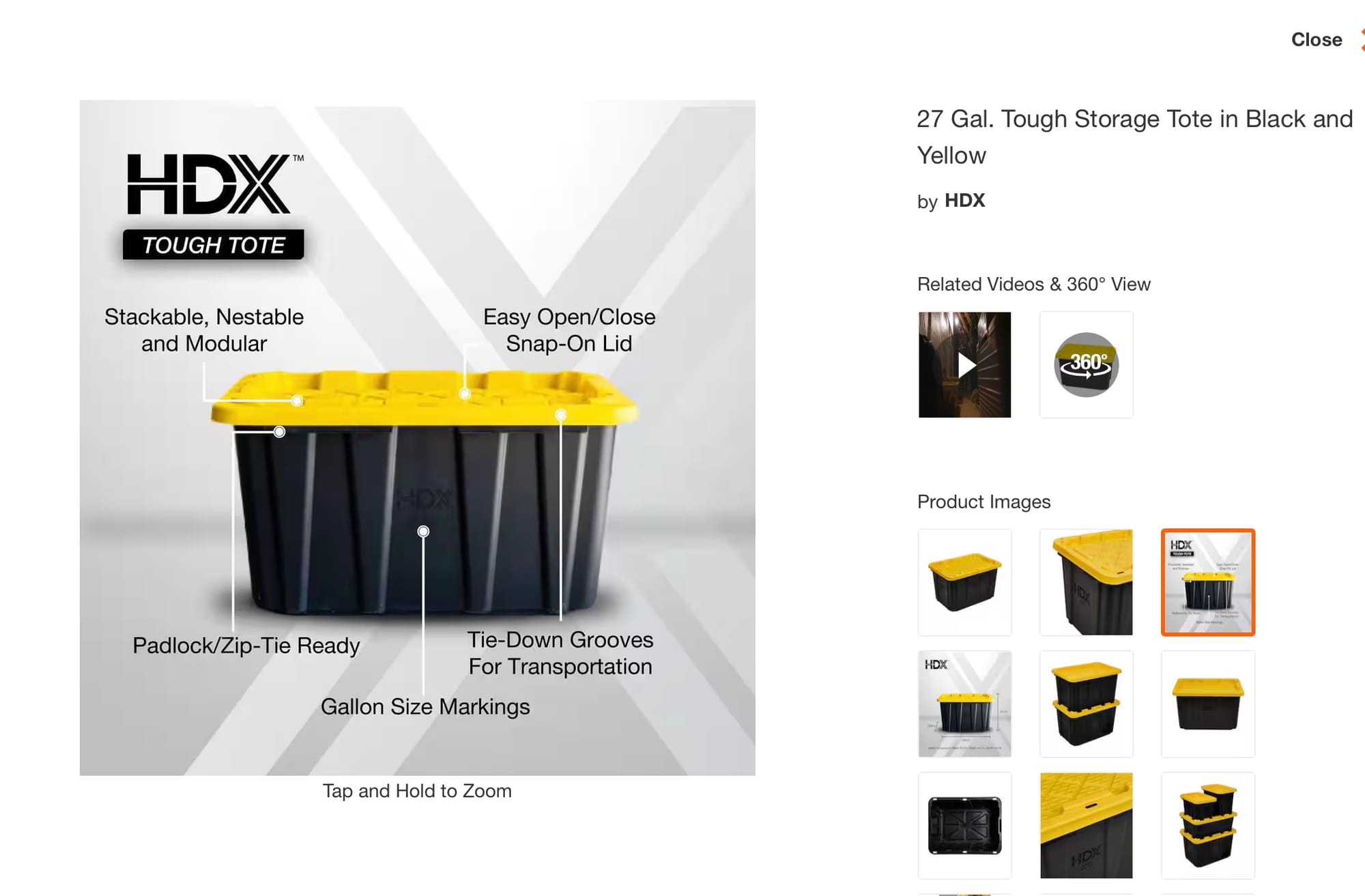
Shelves
After stacking and unstacking bins for a year, I realized I needed shelves so I could easily get to a box, regardless of where it was in the stack.
I considered the much hyped hanging storage tote trend that was taking over YouTube, but ultimately ruled it out because I didn’t trust the storage totes to hold the weight.
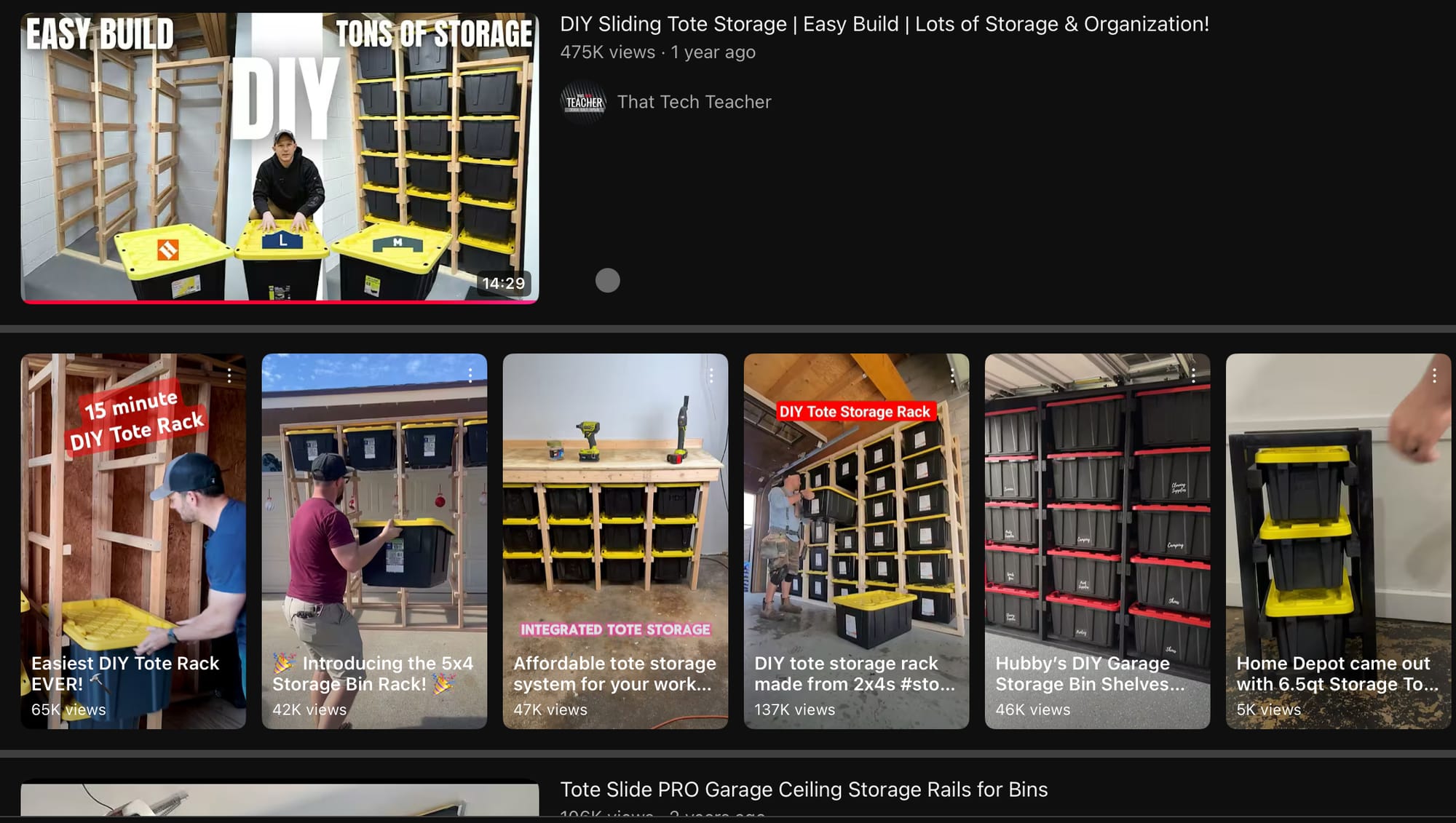
I tested both the plastic and metal HDX shelving from Home Depot, and I also toyed with getting shelves in 48 and 54 inch lengths. What I settled on was the 36 x 16 x 72 wire metal shelves with the rolling casters. Anything wider than that would get too heavy when fully loaded. 36 inches wide is a great width because there are a ton of bin options that are 16 inches wide. In my case, I can use the 70qt or the 64qt bins in this setup interchangeably.
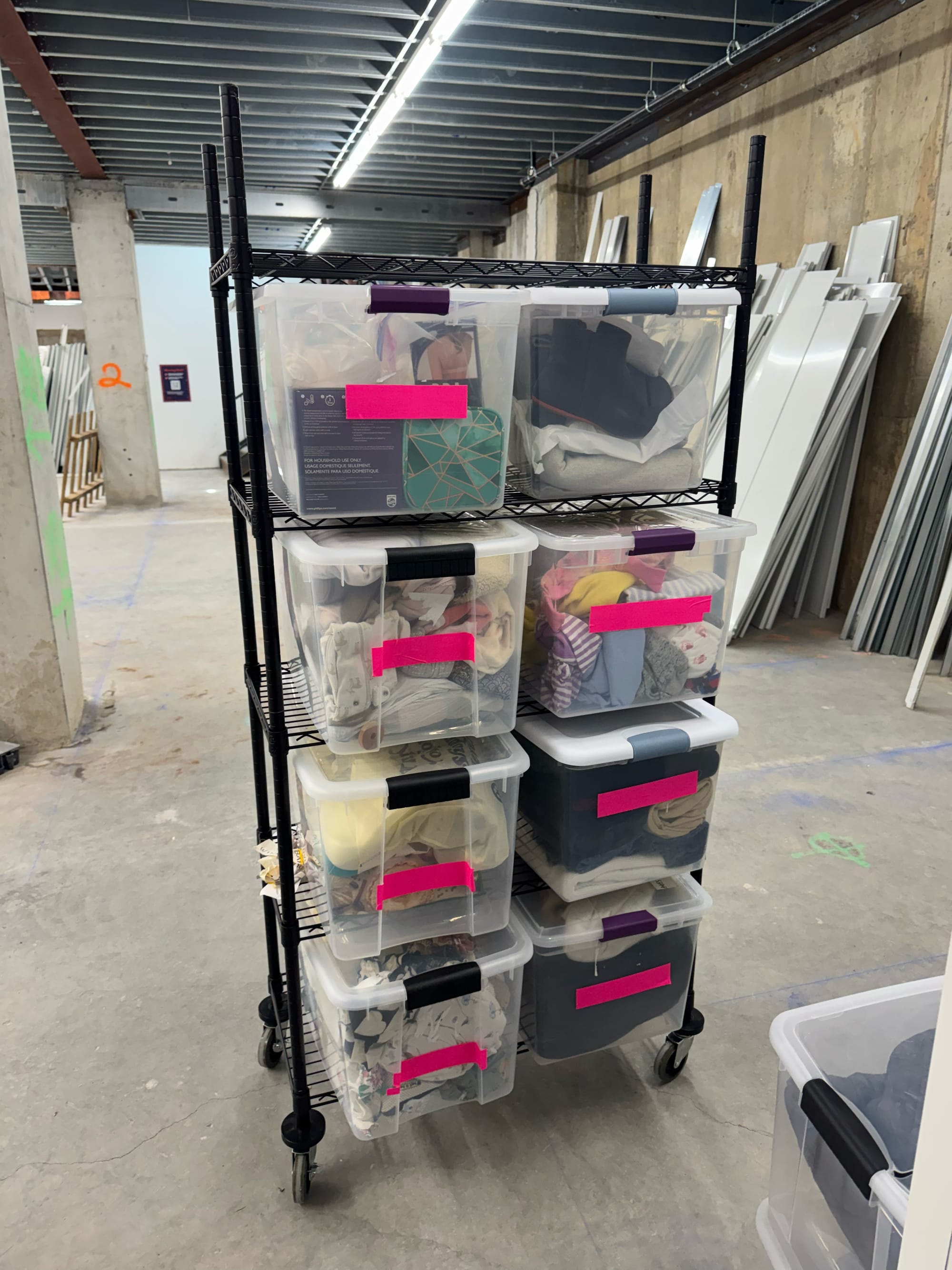
If you’re going to be rolling it around a lot more, you might want to go deeper than 16 inches. 16 inches is doable, but it’s prone to tip over when rolling.
The advantage of casters is that you can move the shelves around within your storage unit, or if you ever have to move to a different storage unit, you can just roll the shelves to the new unit.
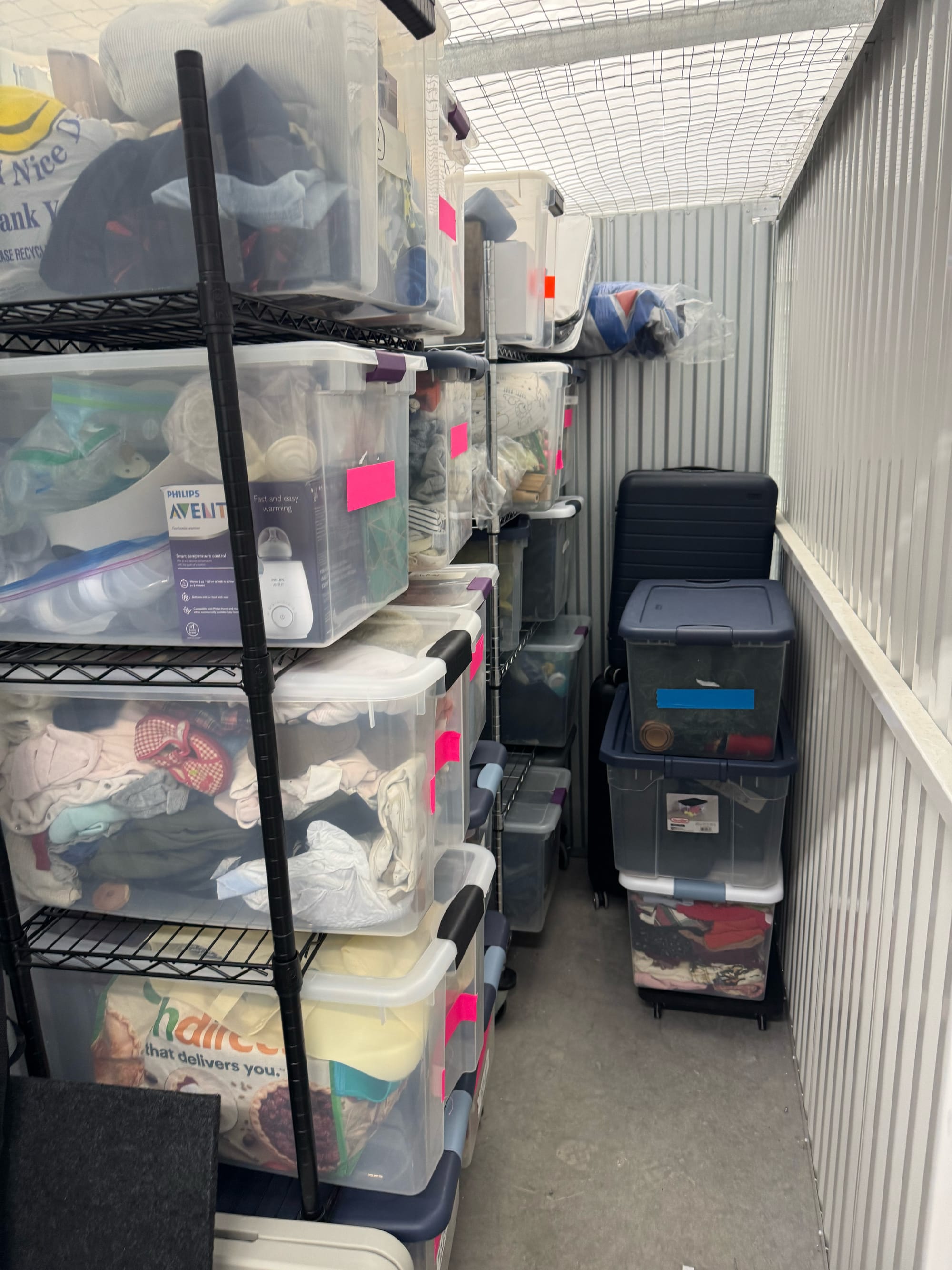
Tracking App
I tried notion, I tried excel, I tried inventory apps, I tried apple reminders… but ultimately, I landed on TickTick. It has a quick, modern interface that works really well on mobile and on desktop. It lets you set up kanban views of the different locations you want to track, and then you can use nested tasks to organize your items into boxes or shelves (with the items as subtasks). The notes and images functionality also makes it effortless to quickly attach multiple photos, so you can see what’s in each bin visually.
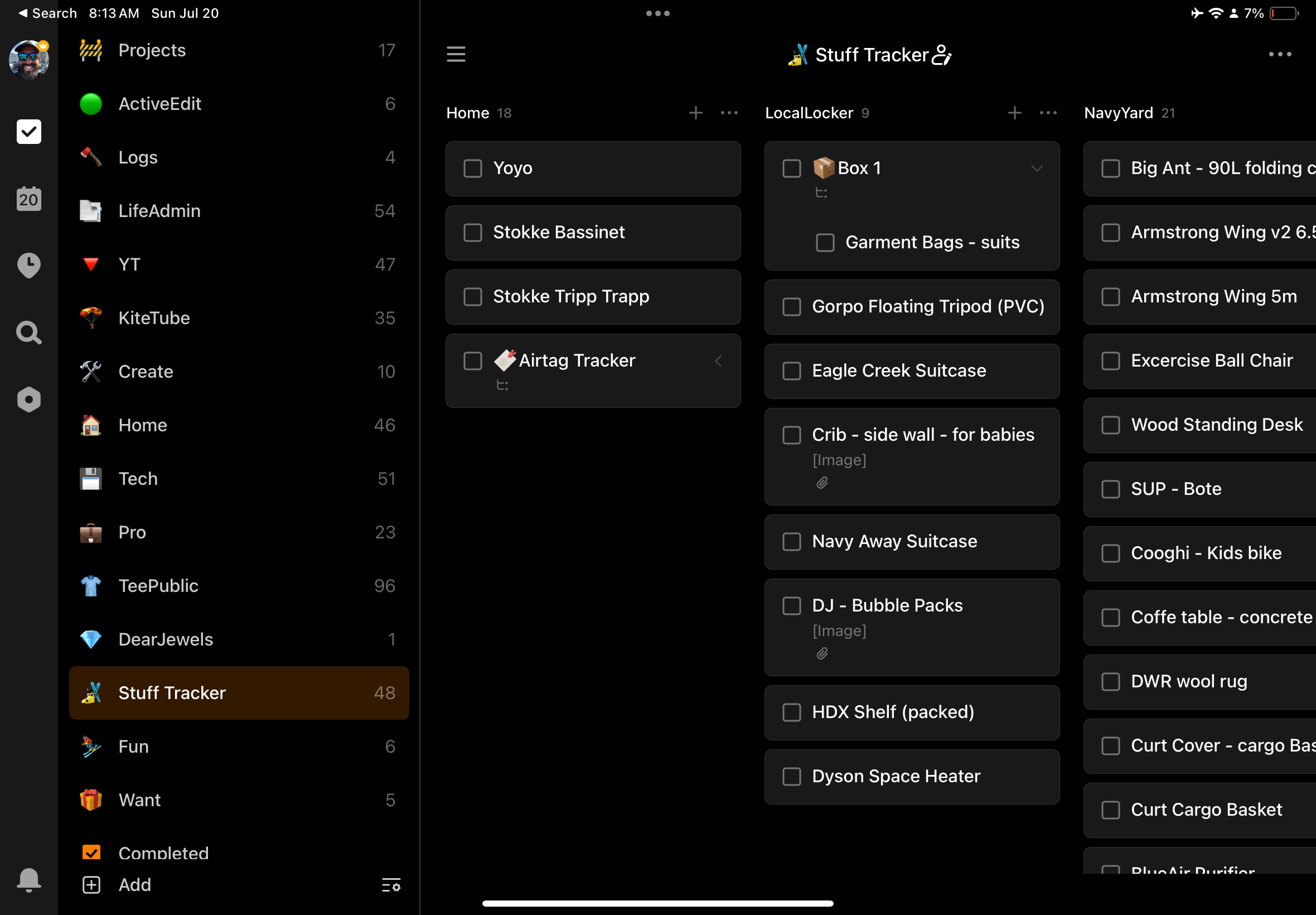
I use each section in the kanban board (each column) for a storage unit. Then within a unit I create a task for a bin, and then I can put all the items in that particular box or bin. If that’s overkill, you can just put a number on a bin, take a photo, and put the important items in the description. I use TickTick for all my task management now, so it's just an added benefit that it can track my storage unit inventory.
The Cart
When constantly lugging this much stuff around, it helps to have a cart. In my case, I picked the smallest one I could find, so it would fit easily in the apartment or in my car when I needed it to. I went with the Rock’n’roller multi cart…. It folds down to a compact size, and when fully open it can actually take a lot of gear all at once.
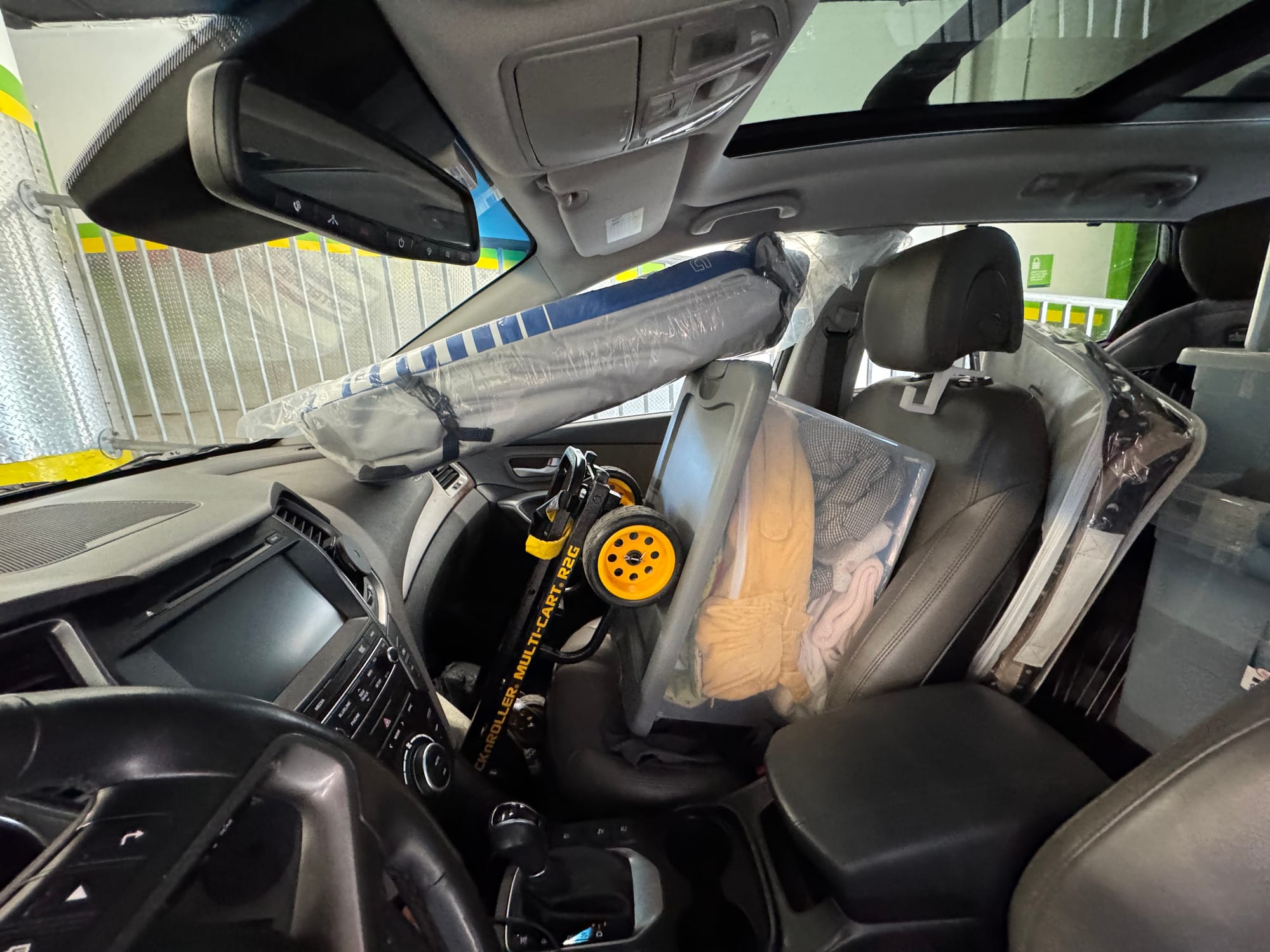
I added the wooden deck to it so that it was more stable when I really needed to do a lot of moving. You can get by with the putting the bins straight on the metal rack, but they slide around pretty easily, so I wouldn’t do larger loads. The other option is you can do ratcheting straps, and put them over the two crossbars.
The only real downside with this setup is it’s a bit heavy, and the handle bars are about 5 inches short for a taller operator that has a long walk to cover.
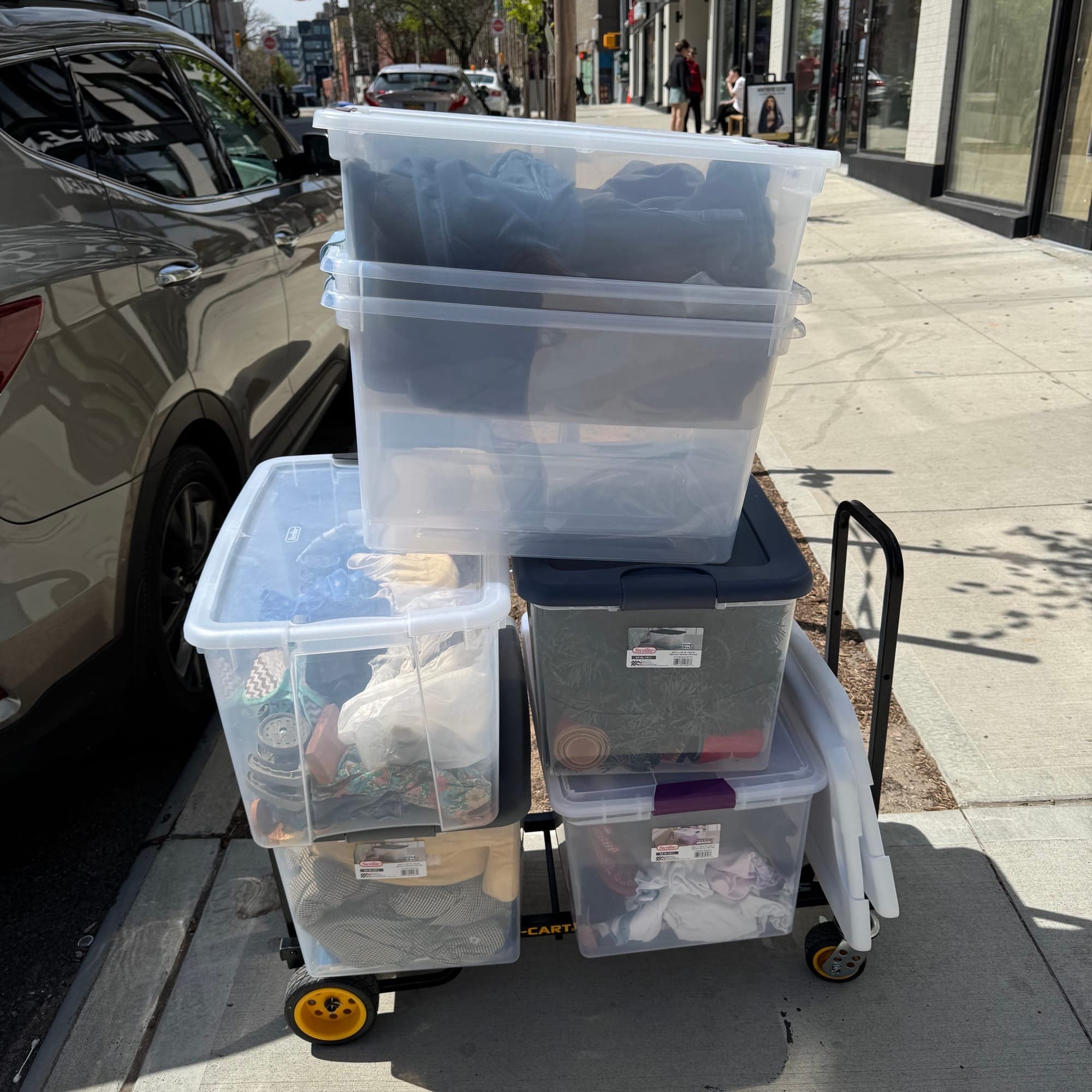
Labels
So if I’ve gone this far to have an organizational system, of course I’m going to need labels. I evaluated QR code and NFC code systems, but ultimately decided to keep things simple, low tech, and very visual.
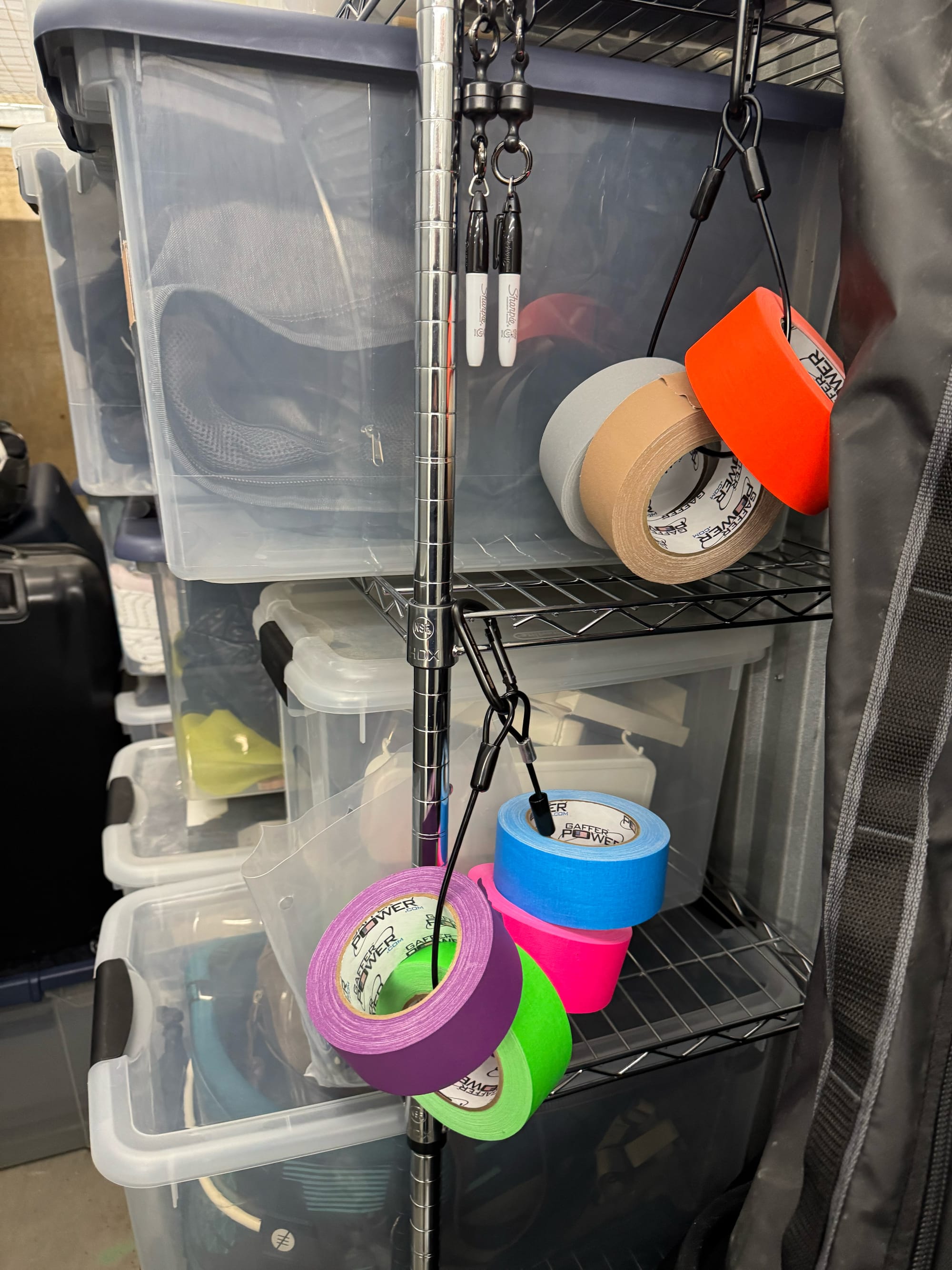
For years, I used cheap amazon gaff tape, but what I learned is it leaves a nasty stick residue that gets pretty annoying as you replace the tape to re-label things when you change the contents.
That’s how I settled on this pro gaffer tape, and I got all the colors to be able to make a clear color coding system. I use the yellow for clothes, the blue for home goods, the green for photography studio equipment, and the pink for all the baby stuff.
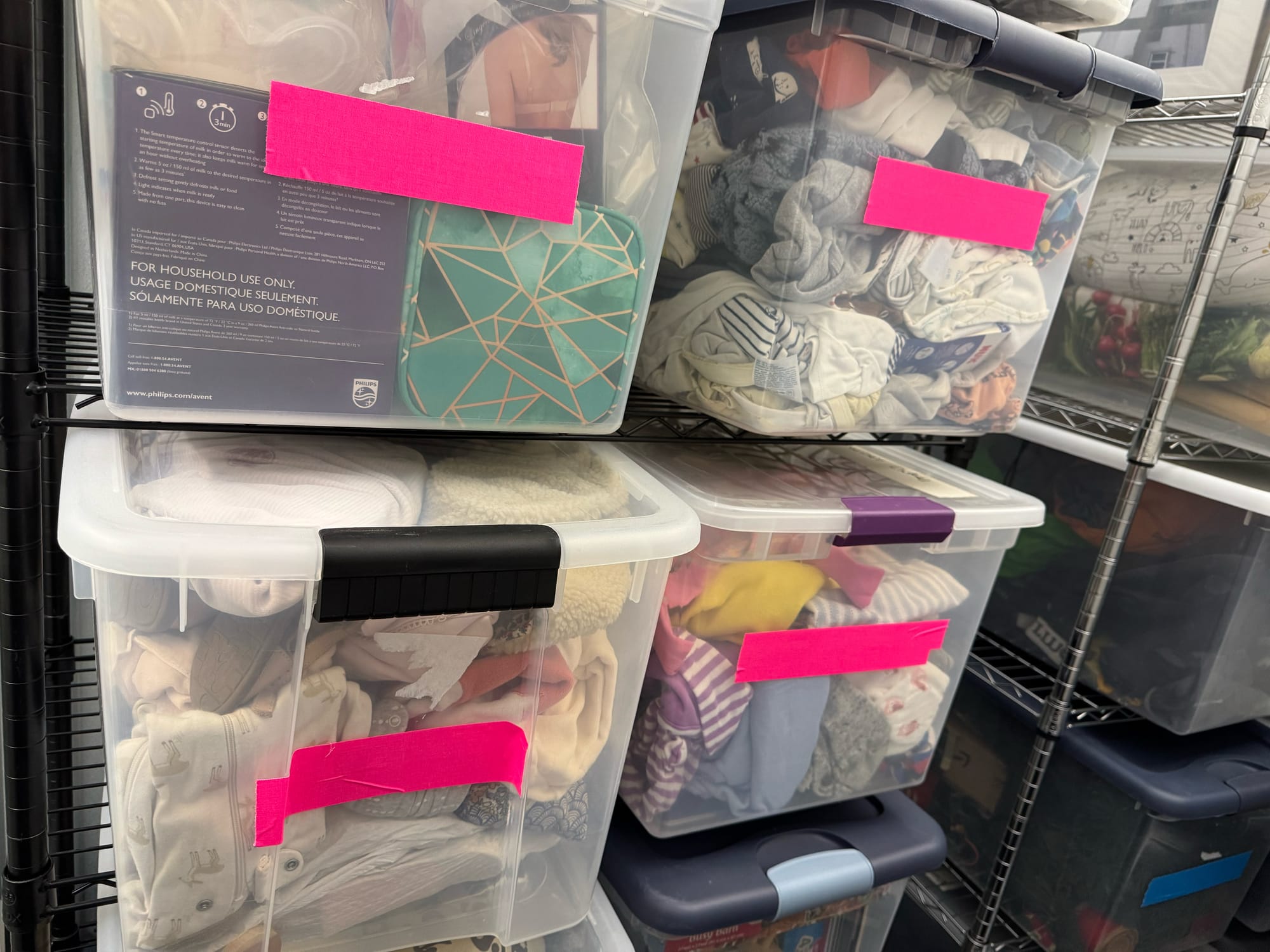
For labeling, I then just keep a few of these small sharpies in the storage unit. I’ve got them hooked to the wire shelves with these magnet keychains that make it easy to grab them, write a label and put them back.
How to make the most of your space
Another challenge I came across was that the storage units didn’t always come in the shapes and sizes that I needed to fit the number of shelves or bins that I had. That mean that I couldn’t have a clear, easy walk-way down the middle and shelving units on both sides.
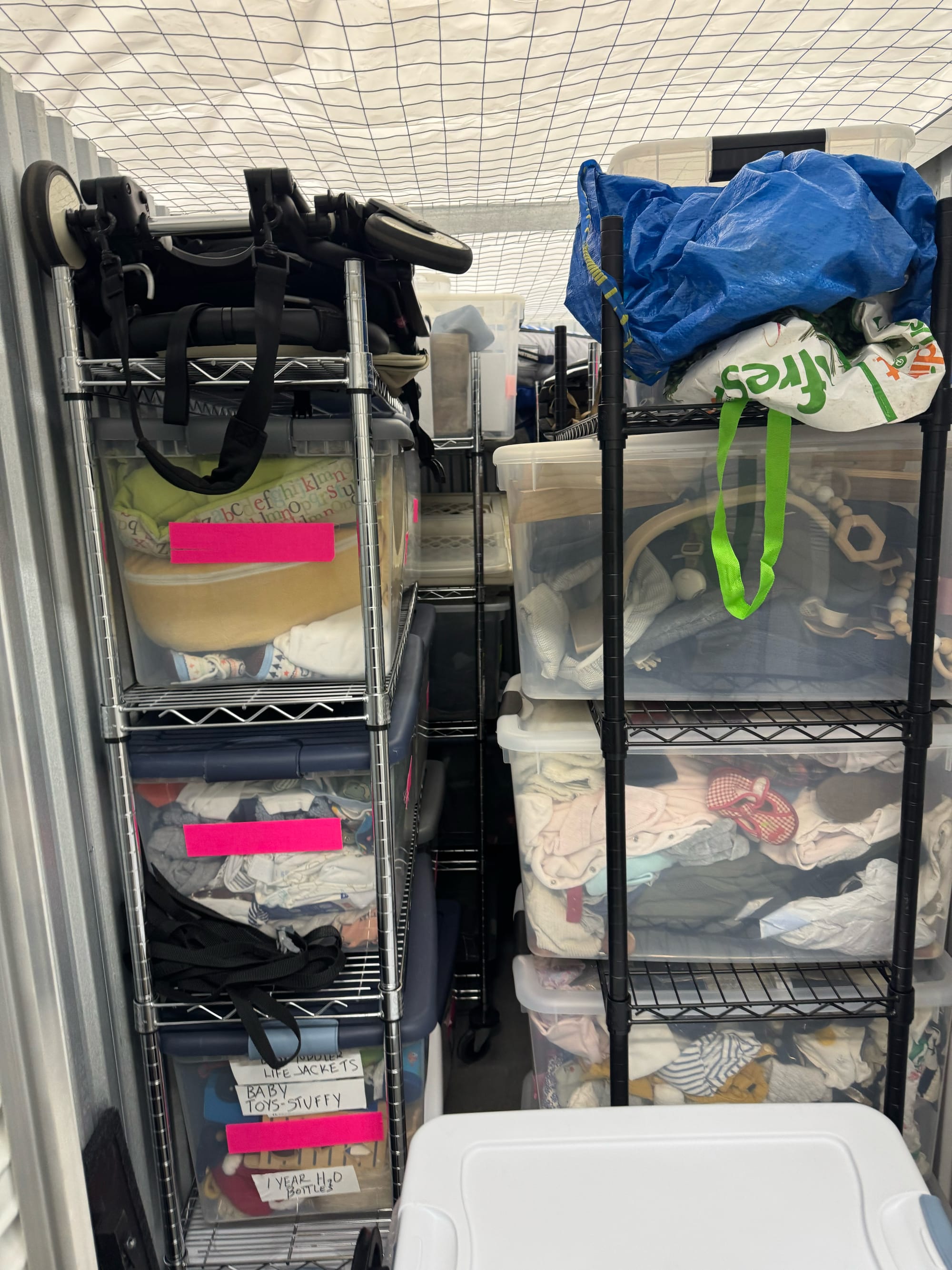
To solve this problem, I just got another set of shelves and put everything on rollers. This one was narrower, and 48 inches wide, and it fits the same storage bins but side-way rather than front to back. This allowed me to put another single shelf in front of the other shelves, and when I need to get into the unit, I can easily slide out this one long shelf to get to everything. I won't be using this setup in places where I need to get access to the items with high frequency. One word of caution with the 14-inch wide shelves, they are not super stable on casters. I put this less stable shelf in a place where I won't be rolling it out to get access to it, the 16-inch shelf which is more stable is the one I move most frequently.
The Storage Unit
The single most important thing in picking a storage unit is how close it is, if you’re ever going to need the things you’re storing. I’ve tried a few different options in Brooklyn, and the most useful by far was Local Locker. They open locations right in your neighborhood, typically in basements that can't be used for much else. The dream scenario is to find one on your block so you don't have to travel far to get access to your unit.
The downside of these units is that they are a partnership between local locker (which is well run and has great customer service) and the landlord of that building. Depending on the landlord, you can get one that isn’t as reactive at fixing problems.
Conclusion
Living in dense urban areas comes with plenty of compromises when it comes to space. Having a storage unit can ease the pain, and having a well-organized storage unit can work wonders. Hopefully, these tips help you solve the space problems in your life!